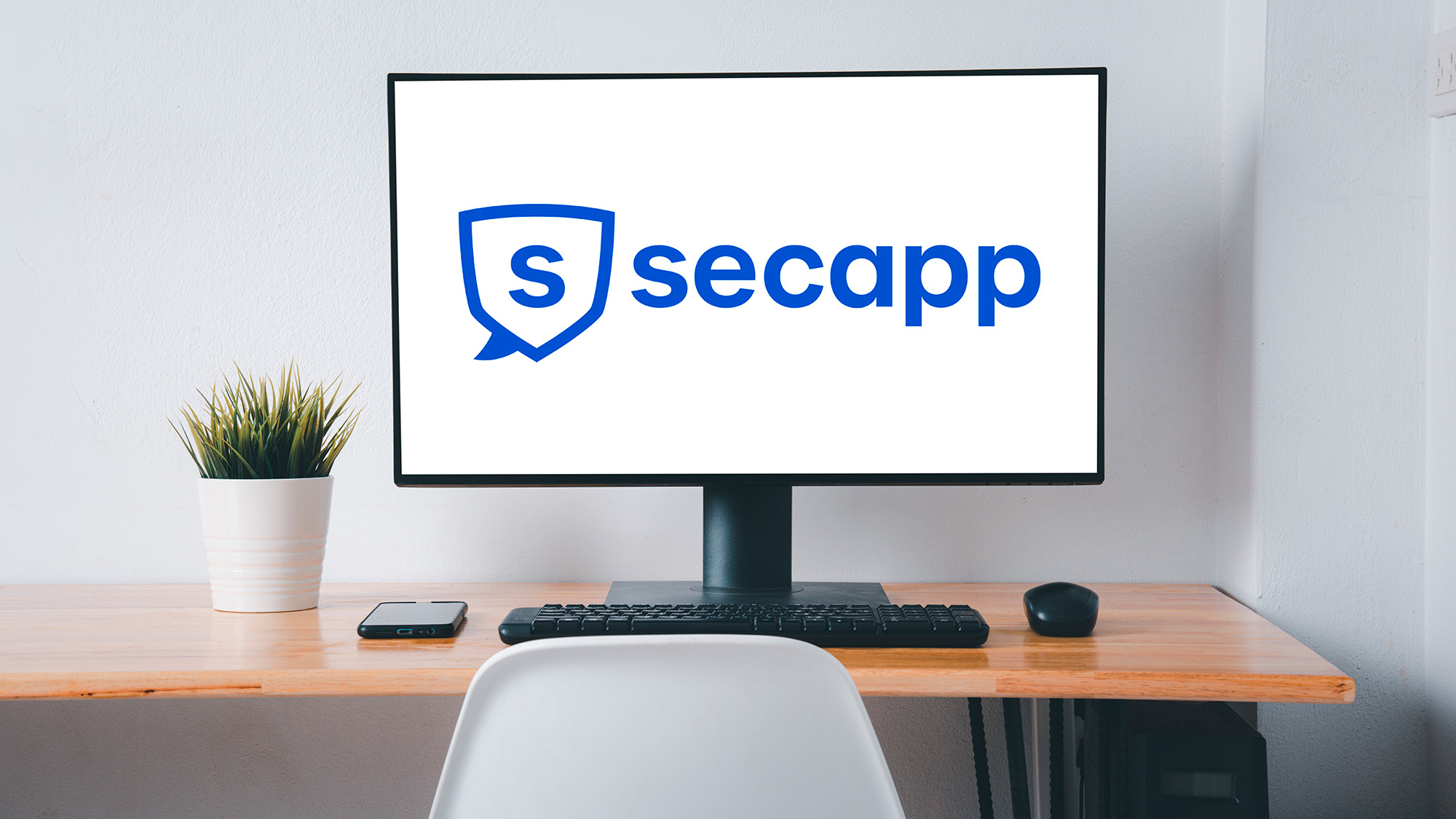
Nobody wishes for a cyberattack or emergency situation for their organization, but if that does happen, you’ll be glad you prepared well in advance. So, how can you prepare for increasingly complex safety threats? What are the best practices for effective crisis management? How can the latest technologies strengthen the safety of your organization? And how can you make sure that your entire staff is sufficiently committed to preparing for safety threats, especially regarding cybersecurity?
These are all topical issues that should be on the desk of every person responsible for the safety and security of their organization. After reading this article, you will learn what kind of solutions we at Secapp can offer to address these challenges.
Secapp helps save lives and manage critical operations in crisis situations
- Secapp is an award-winning critical communication and alerting service that helps you quickly and reliably reach all stakeholders important to your organization. The security management of Secapp’s SaaS platform is ISO27001:2022 certified (Into Certification Oy).
- Secapp removes communication bottlenecks, especially in situations requiring a quick response. Information reaches all relevant parties even when connections are down.
- The system is designed for the needs of, for example, manufacturing, critical infrastructure and public administration. Secapp works on all devices and offers several integration possibilities with systems used in different industries. Read more about Secapp’s user sectors and use cases.
1) Contingency plan in practice: when was the last time you tested the implementation step by step?
When discussing with organizations in various industries, we often find that while comprehensive contingency plans for exceptional situations have been made, many organizations have very little concrete experience of implementing them in practice.
If contact lists, process descriptions, responsibility charts and instructions for proceeding in exceptional situations are scattered in Excel files and email chains, you can face problems in the implementation of the plan right from the start. What if you cannot access the files on the server? What if there’s outdated information on contact lists?
From a crisis management perspective, Secapp is an example of a modern digital solution that provides effective tools for the fast omnichannel reaching of people. The system enables communication even in offline mode, and messages can bypass the silent mode of the recipient’s device.
The people alerted via Secapp can see in real time who is available to help in the situation and with what skills. With Secapp, you can also target communication based on skills (e.g. first aid training, truck license), availability, groups, or location. This makes crisis management much more effective compared to operating via WhatsApp or Teams groups, for example.
With area alerts, you can automate the communication and alerts for a factory area, construction site or office, for example. Automatic alerts can also be triggered based on information from another system.
For example, at the SSAB Raahe factory fire brigade, Secapp has proven to be a cost-effective solution that centralizes their communication and alerting into one platform. Read the customer story here.
When we only use one effective system in alerting situations and communication, we can trust that the information is easily accessible for all parties and securely managed. This way, our contingency plan can be implemented effectively, and we won’t encounter any surprises regarding the process when a crisis occurs.
2) Does your organization invest enough in data security and cyber security?
Cyber attacks and system disruptions can cause significant financial and operational losses for organizations. Recent news reports have shown that ensuring cyber security is increasingly important for all organizations, regardless of industry.
In a hybrid work environment, ensuring cyber security is even more emphasized. If there’s a denial-of-service attack on the company network, how do you reach employees in the field and in home offices?
Secapp helps organizations ensure their operational readiness even when facing cyber threats. If the organization’s own connections are down, within Secapp, you can securely share real-time information such as photos, videos and other files among everyone involved in the alert or exceptional situation.
Secapp’s video call platform Meet, on the other hand, enables data secure communication via audio and video. Each alert received through Secapp’s application can include a Meet room for sharing information among participants. In Meet, participants have access to similar features as in platforms like Teams.
Read also: Preparedness and crisis communication as a part of cybersecurity
3) How to get the whole organization committed to preparing for security threats?
Engaging the whole organization in preparedness planning requires a proactive approach. It’s important to emphasize that especially in the moments when everything is going well, the focus on preparedness should be even greater. Communication is key. The management team must lead by example and demonstrate the importance of preparedness.
The best moment to develop and test contingency plans is when there is no imminent threat. Safety drills play a key role in engaging the staff. These drills not only test the plans, but also train employees to act correctly in the event of a threat. Through drills and exercises, you can identify and improve weaknesses before a real crisis occurs.
You should integrate training and exercises into your organization’s routines to create a safety culture where everyone understands their role and responsibilities. Together with our partners, we at Secapp help organizations plan and implement regular safety drills. You can use Secapp for both virtual tabletop exercises and practical simulations of the situation being practiced.
For example, the Port of Helsinki organized a large-scale safety drill to test the functionality of critical communication. Secapp played a key role in the exercise, since it was the communication channel between authorities and the port’s operational staff. The exercise simulated a situation in which an imaginary external threat would affect the port’s operations.
“During the safety drill, we were able to test the role of communication to a greater extent: how to reach stakeholders, and observe how easy or difficult communication was during the exercise. Secapp was a good management support tool, and we were able to determine that we can reach a large number of people, and also see how they have reacted to messages”, explains Eero Laaksonen, Security Manager at the Port of Helsinki.
The main lessons learned from the exercise were the importance of Secapp’s ready-made message templates and well-planned user groups. Read more about the Port of Helsinki exercise here.
Read also: Secapp’s important role was highlighted in a local defense crisis exercise
4) Investing in well-being at work is part of modern safety management
In many workplaces, there’s a large number of people whose work tasks require working alone. The obligations related to lone worker safety are a part of the Occupational Safety and Health Act and impose certain requirements on employers. For example, employers must identify the risks of lone working and take measures to manage the risks. They also have to ensure that lone workers have access to help in emergencies, such as during manufacturing night shifts, maintenance work, home visits in healthcare, small stores, or on security guard duty.
Since securing lone workers is legally mandated, often less attention is paid to how modern technological solutions for lone worker safety can achieve significant benefits in improving well-being at work, as well.
Ensuring the safety of lone workers improves the psychological safety, concentration and well-being of employees. Secapp’s mobile application includes features especially designed for lone worker safety: the OneClick button and Lone work switch. Getting help is quick and easy, since the alerting buttons are on each person’s phone, and location information ensures that help is sent to the right place. Alerts can be directed to pre-defined individuals and instructions for the situation can be delivered to the person in need within the same application.
For example, Komatsu Forest, one of the world’s leading manufacturers of forest machines, improves the safety of their lone workers with Secapp. The biggest risks their employees face when working alone are getting crushed or falling off a machine. “For that purpose, Secapp’s Lone work switch is an excellent solution”, says Teemu Pesonen from Komatsu Forest.
Read the customer story and watch the video: Komatsu Forest
Secapp’s modern technologies can also significantly ease the burden of supervisors regarding their lone working team members. If previously the supervisor had to remember to send a message to the lone working employee at the end of the day, now through Secapp they can receive an automatic notification on their phone confirming that the employee has returned safely to the workplace or home.
An easy-to-use system that gathers all work-related communication in one place also helps mitigate the constant flood of stimuli. This also contributes to improving well-being at work. You can utilize Secapp for both emergency and everyday communication. This way, employees don’t have to wonder whether they just received an important work-related message in WhatsApp, or worry about whether they have remembered to react to messages on different platforms. This allows them to focus better on their core tasks, thereby improving work safety as well.
When work-related communication is clear and controlled, both safety and well-being at work are improved.
5) Reaching your own staff is important, but more and more stakeholders also need information from you
How does information flow between your company’s different production facilities? How can coordination between units be improved on campuses with several educational institutions? What are the best ways for wellbeing service counties with many service providers to operate across organizational boundaries?
The Covid-19 pandemic has prompted many organizations to find effective ways of reaching their own staff during exceptional situations. Many organizations have internal email distribution and Teams channels, but more efficient ways of cooperating with partners and stakeholders are still needed.
Reaching stakeholders requires clear processes as well as functional, reliable and secure systems. In unexpected situations concerning the organization and its stakeholders, Secapp’s virtual Situation Center and cooperation features facilitate crisis management and incident management.
Secapp Connect enables smooth cooperation between two or more organizations. One Secapp account can be part of several different organizations, which facilitates communication between organizations. It also makes it possible for you to create groups from users of the shared organizations. In a crisis situation, you don’t need to separately search for the contact information of experts from other organizations – important information and alerts can be delivered to key people in seconds. This significantly speeds up the initiation of necessary actions.
Read also: Secapp Situation Center – a virtual crisis room in your pocket
An expert from Secapp was interviewed for this article: Aleksi Aaltonen (Solution Sales & Expertise Director)
Read more about Secapp’s use cases in different industries

Nobody wishes for a cyberattack or emergency situation for their organization, but if that does happen, you’ll be glad you prepared well in advance. So, how can you prepare for increasingly complex safety threats? What are the best practices for effective crisis management? How can the latest technologies strengthen the safety of your organization? And how can you make sure that your entire staff is sufficiently committed to preparing for safety threats, especially regarding cybersecurity?
These are all topical issues that should be on the desk of every person responsible for the safety and security of their organization. After reading this article, you will learn what kind of solutions we at Secapp can offer to address these challenges.
Secapp helps save lives and manage critical operations in crisis situations
- Secapp is an award-winning critical communication and alerting service that helps you quickly and reliably reach all stakeholders important to your organization. The security management of Secapp’s SaaS platform is ISO27001:2022 certified (Into Certification Oy).
- Secapp removes communication bottlenecks, especially in situations requiring a quick response. Information reaches all relevant parties even when connections are down.
- The system is designed for the needs of, for example, manufacturing, critical infrastructure and public administration. Secapp works on all devices and offers several integration possibilities with systems used in different industries. Read more about Secapp’s user sectors and use cases.
1) Contingency plan in practice: when was the last time you tested the implementation step by step?
When discussing with organizations in various industries, we often find that while comprehensive contingency plans for exceptional situations have been made, many organizations have very little concrete experience of implementing them in practice.
If contact lists, process descriptions, responsibility charts and instructions for proceeding in exceptional situations are scattered in Excel files and email chains, you can face problems in the implementation of the plan right from the start. What if you cannot access the files on the server? What if there’s outdated information on contact lists?
From a crisis management perspective, Secapp is an example of a modern digital solution that provides effective tools for the fast omnichannel reaching of people. The system enables communication even in offline mode, and messages can bypass the silent mode of the recipient’s device.
The people alerted via Secapp can see in real time who is available to help in the situation and with what skills. With Secapp, you can also target communication based on skills (e.g. first aid training, truck license), availability, groups, or location. This makes crisis management much more effective compared to operating via WhatsApp or Teams groups, for example.
With area alerts, you can automate the communication and alerts for a factory area, construction site or office, for example. Automatic alerts can also be triggered based on information from another system.
For example, at the SSAB Raahe factory fire brigade, Secapp has proven to be a cost-effective solution that centralizes their communication and alerting into one platform. Read the customer story here.
When we only use one effective system in alerting situations and communication, we can trust that the information is easily accessible for all parties and securely managed. This way, our contingency plan can be implemented effectively, and we won’t encounter any surprises regarding the process when a crisis occurs.
2) Does your organization invest enough in data security and cyber security?
Cyber attacks and system disruptions can cause significant financial and operational losses for organizations. Recent news reports have shown that ensuring cyber security is increasingly important for all organizations, regardless of industry.
In a hybrid work environment, ensuring cyber security is even more emphasized. If there’s a denial-of-service attack on the company network, how do you reach employees in the field and in home offices?
Secapp helps organizations ensure their operational readiness even when facing cyber threats. If the organization’s own connections are down, within Secapp, you can securely share real-time information such as photos, videos and other files among everyone involved in the alert or exceptional situation.
Secapp’s video call platform Meet, on the other hand, enables data secure communication via audio and video. Each alert received through Secapp’s application can include a Meet room for sharing information among participants. In Meet, participants have access to similar features as in platforms like Teams.
Read also: Preparedness and crisis communication as a part of cybersecurity
3) How to get the whole organization committed to preparing for security threats?
Engaging the whole organization in preparedness planning requires a proactive approach. It’s important to emphasize that especially in the moments when everything is going well, the focus on preparedness should be even greater. Communication is key. The management team must lead by example and demonstrate the importance of preparedness.
The best moment to develop and test contingency plans is when there is no imminent threat. Safety drills play a key role in engaging the staff. These drills not only test the plans, but also train employees to act correctly in the event of a threat. Through drills and exercises, you can identify and improve weaknesses before a real crisis occurs.
You should integrate training and exercises into your organization’s routines to create a safety culture where everyone understands their role and responsibilities. Together with our partners, we at Secapp help organizations plan and implement regular safety drills. You can use Secapp for both virtual tabletop exercises and practical simulations of the situation being practiced.
For example, the Port of Helsinki organized a large-scale safety drill to test the functionality of critical communication. Secapp played a key role in the exercise, since it was the communication channel between authorities and the port’s operational staff. The exercise simulated a situation in which an imaginary external threat would affect the port’s operations.
“During the safety drill, we were able to test the role of communication to a greater extent: how to reach stakeholders, and observe how easy or difficult communication was during the exercise. Secapp was a good management support tool, and we were able to determine that we can reach a large number of people, and also see how they have reacted to messages”, explains Eero Laaksonen, Security Manager at the Port of Helsinki.
The main lessons learned from the exercise were the importance of Secapp’s ready-made message templates and well-planned user groups. Read more about the Port of Helsinki exercise here.
Read also: Secapp’s important role was highlighted in a local defense crisis exercise
4) Investing in well-being at work is part of modern safety management
In many workplaces, there’s a large number of people whose work tasks require working alone. The obligations related to lone worker safety are a part of the Occupational Safety and Health Act and impose certain requirements on employers. For example, employers must identify the risks of lone working and take measures to manage the risks. They also have to ensure that lone workers have access to help in emergencies, such as during manufacturing night shifts, maintenance work, home visits in healthcare, small stores, or on security guard duty.
Since securing lone workers is legally mandated, often less attention is paid to how modern technological solutions for lone worker safety can achieve significant benefits in improving well-being at work, as well.
Ensuring the safety of lone workers improves the psychological safety, concentration and well-being of employees. Secapp’s mobile application includes features especially designed for lone worker safety: the OneClick button and Lone work switch. Getting help is quick and easy, since the alerting buttons are on each person’s phone, and location information ensures that help is sent to the right place. Alerts can be directed to pre-defined individuals and instructions for the situation can be delivered to the person in need within the same application.
For example, Komatsu Forest, one of the world’s leading manufacturers of forest machines, improves the safety of their lone workers with Secapp. The biggest risks their employees face when working alone are getting crushed or falling off a machine. “For that purpose, Secapp’s Lone work switch is an excellent solution”, says Teemu Pesonen from Komatsu Forest.
Read the customer story and watch the video: Komatsu Forest
Secapp’s modern technologies can also significantly ease the burden of supervisors regarding their lone working team members. If previously the supervisor had to remember to send a message to the lone working employee at the end of the day, now through Secapp they can receive an automatic notification on their phone confirming that the employee has returned safely to the workplace or home.
An easy-to-use system that gathers all work-related communication in one place also helps mitigate the constant flood of stimuli. This also contributes to improving well-being at work. You can utilize Secapp for both emergency and everyday communication. This way, employees don’t have to wonder whether they just received an important work-related message in WhatsApp, or worry about whether they have remembered to react to messages on different platforms. This allows them to focus better on their core tasks, thereby improving work safety as well.
When work-related communication is clear and controlled, both safety and well-being at work are improved.
5) Reaching your own staff is important, but more and more stakeholders also need information from you
How does information flow between your company’s different production facilities? How can coordination between units be improved on campuses with several educational institutions? What are the best ways for wellbeing service counties with many service providers to operate across organizational boundaries?
The Covid-19 pandemic has prompted many organizations to find effective ways of reaching their own staff during exceptional situations. Many organizations have internal email distribution and Teams channels, but more efficient ways of cooperating with partners and stakeholders are still needed.
Reaching stakeholders requires clear processes as well as functional, reliable and secure systems. In unexpected situations concerning the organization and its stakeholders, Secapp’s virtual Situation Center and cooperation features facilitate crisis management and incident management.
Secapp Connect enables smooth cooperation between two or more organizations. One Secapp account can be part of several different organizations, which facilitates communication between organizations. It also makes it possible for you to create groups from users of the shared organizations. In a crisis situation, you don’t need to separately search for the contact information of experts from other organizations – important information and alerts can be delivered to key people in seconds. This significantly speeds up the initiation of necessary actions.
Read also: Secapp Situation Center – a virtual crisis room in your pocket
An expert from Secapp was interviewed for this article: Aleksi Aaltonen (Solution Sales & Expertise Director)









